By Micheal Rios, Tulalip News
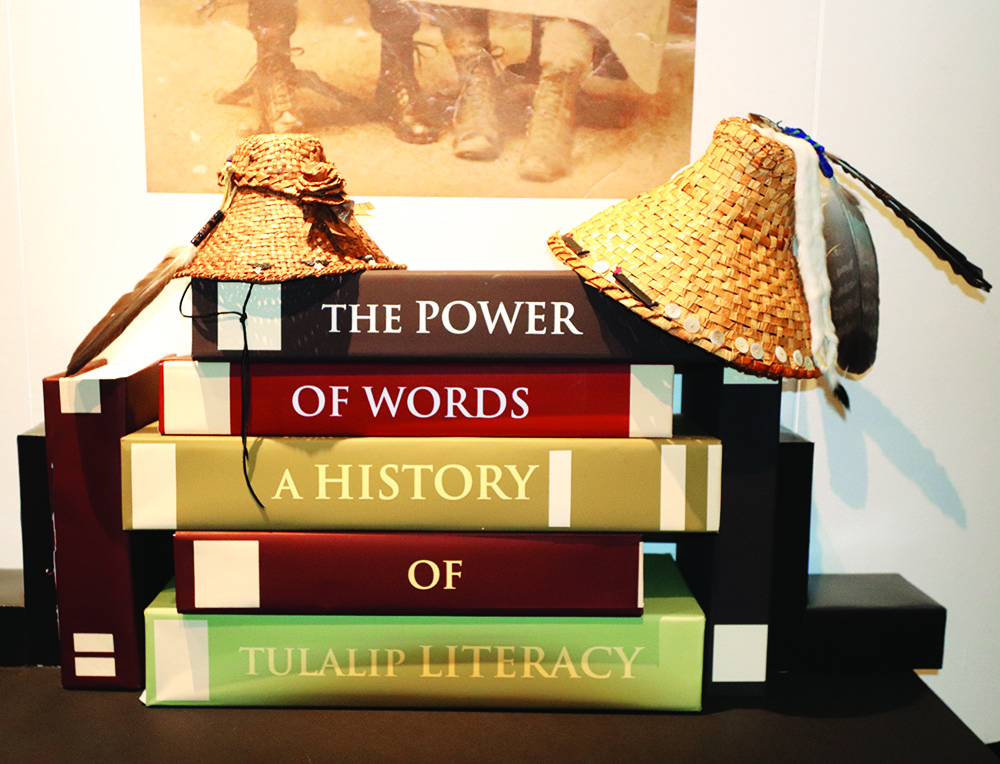
In the frigid winter weather of 1855, a monumental gathering between Native American leadership of the greater Puget Sound region and Governor Stevens, of the recently formed Washington Territory, occurred near the sea banks at Muckl-te-oh. There, on that 22nd day of January, Chiefs Seattle, Patkanim and Chow-its-hoot, joined by sub-chiefs and delegates of nearby tribes, bands and villages, left their mark on a piece of parchment. That parchment is known as the Treaty of Point Elliot.
By signing that treaty, the Snohomish, Snoqualmie, Skykomish and allied bands, together with other northern Puget Sound tribes, ceded over 5 million acres of land to the U.S. government and agreed to relocate to several small tracts of land called reservations. In doing so, the tribal leadership of the time were heavily scrutinized, shunned, and in some instances killed for giving away their ancestral homelands to the white man. However, time would prove those tribal leaders to be the barriers of infinite wisdom.
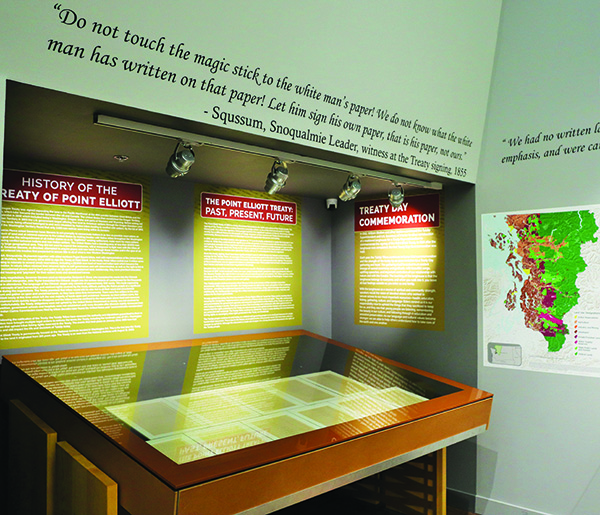
“The treaty itself is a legal and binding contract between two sovereigns [the tribes and the U.S. government] that reserves our right to fish in usual and accustomed areas, our right to hunt and gather in open and unclaimed lands, and our right to govern ourselves,” said Ray Fryberg, executive director of Natural Resources. “It’s important to remember these treaty rights were reserved, they weren’t granted to us. We weren’t granted anything in the treaty. These are rights [our ancestors] reserved for us.”
Among the several reservations the Point Elliot Treaty established was a 22,000 acre land-base called the Tulalip Reservation, which set the stage for the consolidation of treaty tribes gathered and living within reservation boundaries. These tribes would eventually become known by the singular title and modern identity: Tulalip Tribes of Washington.
Today, the Tulalip Reservation is rich with natural resources, such as marine waters, tidelands, fresh water creeks and lakes, wetlands, forests and developable land. The Tulalip Tribes have developed into an economic powerhouse fueled by multiple casinos and Quil Ceda Village business endeavors, while becoming one of the largest employers in Snohomish County. Revenues from gambling operations and lease payments from QCV businesses pay for a litany of services and programs that benefit an ever-growing Tulalip tribal membership.
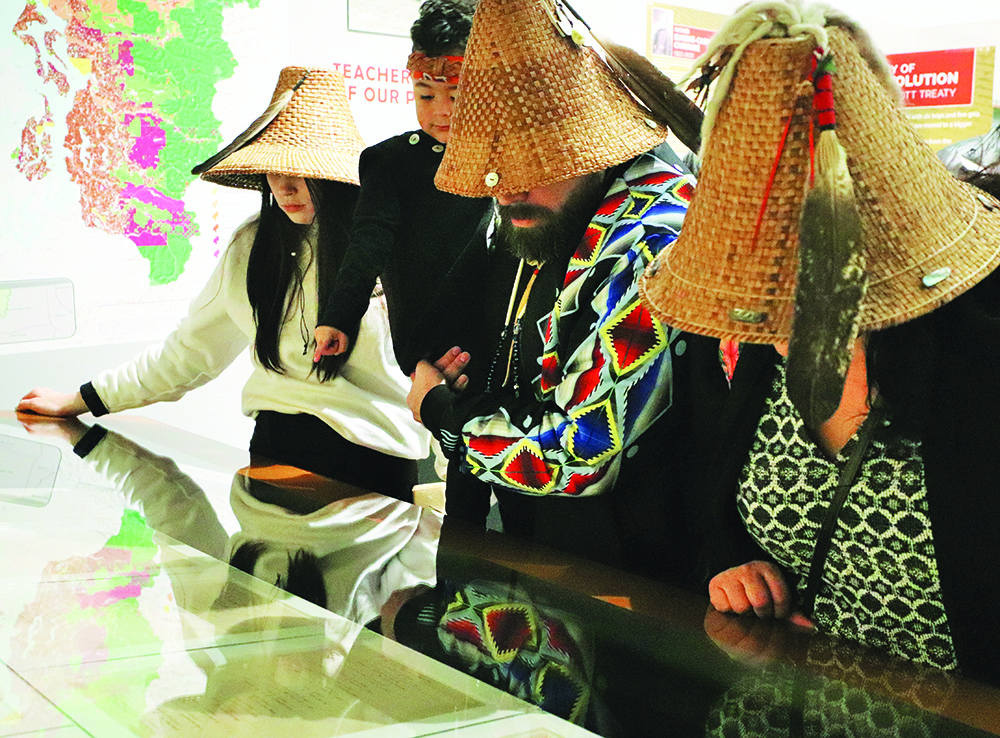
‘All Treaties made…under the authority of the United States, shall be the supreme Law of the Land.’ – states article VI, section 2 of the U.S. Constitution.
One hundred and sixty-five years to that historic day tribal leaders left their mark on parchment, the Treaty of Point Elliot has finally returned to the Puget Sound area and is on full display at the Hibulb Cultural Center. It has been locked away and hidden from public view in Washington D.C. since it was initially signed and ratified. After a lengthy and arduous process undertook by Hibulb senior curator Tessa Campbell and assistant curator Emilie Miller, the document responsible for the inception of the Tulalip Tribes traveled by armored truck on a secret route to get here. Now, it is showcased as part of Hibulb’s truly innovative Power of Words: A History of Tulalip Literacy exhibit.
“We were able to develop this exhibit with the documents left behind by our ancestors,” explained Tessa. “The exhibit is filled with the words of our ancestors and you can feel their powerful words the minute you enter the gallery. It is powerful!
“Literacy has allowed us to keep a record of our history, culture and teachings,” continued Tessa. “However, literacy has not become a lifeway for a people. Literacy has not replaced our lifeways or teachings. Instead, it is a tool we learned to use to our advantage for healing, carrying on the teachings and traditions of our people, and, most importantly, upholding the inherent rights of our Treaty.”
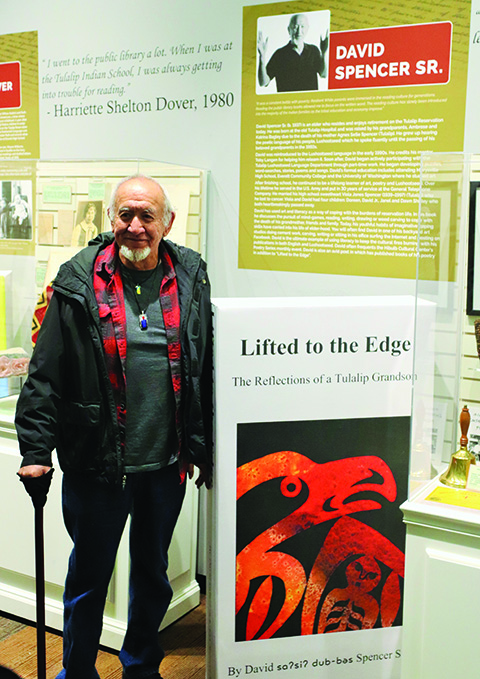
A special exhibit preview was held on January 22nd to celebrate the 165th anniversary of the treaty’s signing. An estimated 120 Tulalip tribal members gathered in the Hibulb longhouse room to hear many precious words spoke of importance and critical understanding that the treaty embodies as a living document.
“It’s imperative we honor, respect and recognize what this treaty means,” declared Tulalip board of director and vice-chairman Glen Gobin. “Nobody gave us sovereignty. We had inherent sovereignty because we were always here. That treaty acknowledges that sovereignty. Since treaty times, every tribal leader has fought to enact and protect the provisions in that document, and that’s why we are still here today.
“We are a sovereign nation with a treaty with the U.S. government because of our ancestors who never gave up the things they thought were most important. When you think of all the adversity the tribes have faced after 165 years, it’s amazing we are still here. It shows the resiliency we have, the strength of our own teachings, and the power of our understanding of what it means to protect that treaty.”
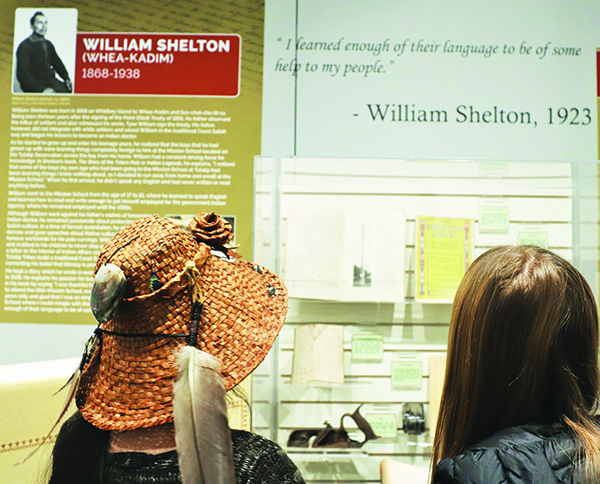
The Tulalip people continue to exist today as a distinct self-governing, culturally vibrant people in no small part because of a single, handwritten document. This is due to the literary accomplishments and powerful words that have been used as an unwavering defense to uphold it. Although the treaty is just pieces of parchment, it is regarded as a living document that protects the rights of the Tulalip Tribes.
A common teaching heard in Native communities is the Seventh Generation principle; based on the philosophy that the decision we make today should result in a sustainable world seven generations into the future. It is noted that since the Point Elliot Treaty’s signing on January 22, 1855 there have been exactly seven generations.
Today, there is a whole generation of Tulalip citizens who thrive on their reservation. They’ve grown up with their cultural fires burning bright. They’ve had endless opportunity to nourish their families by hunting or fishing for traditional foods, hear their ancestral language Lushootseed, and strengthen their spirit in the Tulalip Longhouse. All of this and so much more is possible because 165 years ago tribal leaders of the time made their mark on parchment.
Tulalip elder Ray Fryberg put it best, while experiencing the Treaty of Point Elliot exhibit, he remarked, “Everything we are today, from each tribal department and business to every single one of our tribal members, we are because of that treaty.”